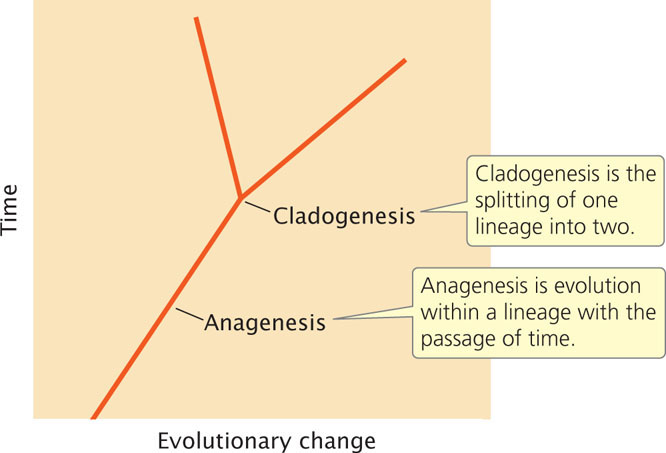26.1 Evolution Occurs Through Genetic Change Within Populations
Evolution is one of the foundational principles of all of biology. Theodosius Dobzhansky, an important early leader in the field of evolutionary genetics, once remarked “Nothing in biology makes sense except in the light of evolution.” Indeed, evolution is an all-encompassing theory that helps to make sense of much of the natural world, from the sequences of DNA found in our cells to the types of organisms that surround us. The evidence for evolution is overwhelming. Evolution has been directly observed numerous times; for example, hundreds of different insect species evolved resistance to common pesticides that were introduced after World War II. Evolution is supported by the fossil record, comparative anatomy, embryology, the distribution of plants and animals (biogeography), and molecular genetics.
Biological Evolution
In spite of its vast importance to all fields of biology, evolution is often misunderstood and misinterpreted. In our society, the term evolution frequently refers to any type of change. However, biological evolution refers only to a specific type of change—genetic change taking place in a group of organisms. Two aspects of this definition should be emphasized. First, evolution includes genetic change only. Many nongenetic changes take place in living organisms, such as the development of a complex intelligent person from a single-celled zygote. Although remarkable, this change isn’t evolution, because it does not include changes in genes. The second aspect to emphasize is that evolution takes place in groups of organisms. An individual organism does not evolve; what evolves is the gene pool common to a group of organisms.
Evolution as a Two-Step Process
Evolution can be thought of as a two-step process. First, genetic variation arises. Genetic variation has its origin in the processes of mutation, which produces new alleles, and recombination, which shuffles alleles into new combinations. Both of these processes are random and produce genetic variation continually, regardless of evolution’s requirement for it. The second step in the process of evolution is the increase and decrease in the frequencies of genetic variants. Various evolutionary forces discussed in Chapter 25 cause some alleles in the gene pool to increase in frequency and other alleles to decrease in frequency. This shift in the composition of the gene pool common to a group of organisms constitutes evolutionary change.
745
Types of Evolution
We can differentiate between two types of evolution that take place within a group of organisms connected by reproduction. Anagenesis refers to evolution taking place in a single group (a lineage) with the passage of time (Figure 26.1). Another type of evolution is cladogenesis, the splitting of one lineage into two. When a lineage splits, the two branches no longer have a common gene pool and evolve independently of one another. New species arise through cladogenesis.  TRY PROBLEM 21
TRY PROBLEM 21

CONCEPTS
Biological evolution is genetic change that takes place within a group of organisms. Anagenesis is evolution that takes place within a single lineage; cladogenesis is the splitting of one lineage into two.
 CONCEPT CHECK 1
CONCEPT CHECK 1
Briefly describe how evolution takes place as a two-step process.